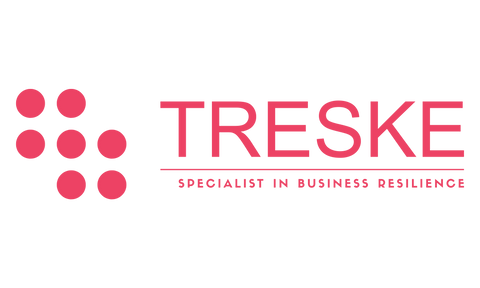In a rapidly evolving technological landscape, the proliferation of artificial intelligence (AI) is reshaping industries worldwide. According to Forbes' AI Statistics And Trends, digital technologies, including AI, are projected to contribute significantly to the Australian economy, with estimates suggesting a value of $315 billion by 2028. Moreover, research from data hub Statista reveals that leading industries in Australia, including aerospace, defence, security, mining, energy, and resources, are embracing AI solutions at an accelerating pace.
As far as technological advancement goes, artificial intelligence (AI) stands out as a transformative force, particularly in manufacturing, industrial, and mining sectors. As AI continues to evolve at a rapid pace and the utilisation of data skyrockets, it becomes imperative for businesses to fortify and future-proof their critical IT infrastructure to withstand the demands of this unprecedented digital revolution.
The Australian mining industry, especially in regions like Newcastle, NSW, and its wider vicinity, is no stranger to technological innovation. With AI increasingly permeating various aspects of operations, from predictive maintenance to autonomous vehicles, the need for robust IT systems capable of handling massive data influxes becomes paramount.
Consider the vast expanse of the Australian mining landscape, with over 350 operational mine sites scattered across the country. Approximately one-third reside in Western Australia, one-quarter in Queensland, and one-fifth in New South Wales. This staggering scale emphasises the magnitude of operations in this industry.
In this context, AI-powered sensors play a crucial role in monitoring equipment health and performance, generating immense volumes of real-time data. However, without a scalable IT infrastructure in place, the capacity to process, analyse, and derive actionable insights from this data becomes severely compromised. This highlights the pressing need not only to anticipate the AI boom but also to prepare for scaling up IT solutions rapidly to keep pace with the evolving demands of the industry. demands.
Typical AI Use Cases in Mining Industry
So what are the top uses for AI in the mining industry? According to Mining Digital, the top 10 use cases for AI in mining are are;
-
Autonomous Vehicles: Komatsu utilises electric drive mining trucks for safe and efficient operations, with a range of trucks designed for various capacities to enhance productivity and safety.
-
Decision Support Systems: Anglo American employs AI solutions for mineral exploration and resources estimation, enhancing decision-making processes, improving worker safety, and reducing costs.
-
Ore Sorting: Vale utilises AI-based sorting systems to identify valuable minerals from waste rock in real-time, improving recovery rates and reducing processing costs.
-
Robotics: Offworld offers AI industrial swarm robotic mining systems for various tasks, including surveying, excavating, collecting, hauling, and processing materials, enhancing efficiency and safety.
-
Safety and Risk Assessments: AI-powered weather forecasting technology, like Tomorrow.io, aids mining companies in predicting weather conditions, managing risks, and making informed decisions.
-
Predictive Maintenance: ABB Global's predictive maintenance service provides real-time condition monitoring of assets, enabling proactive maintenance and ensuring on-site safety.
-
Exploration: Barrick Gold Corporation employs AI algorithms to process geological and geophysical data, aiding in mine exploration and optimisation of drilling operations.
-
Environmental Data: BHP and Microsoft utilise AI and machine learning to optimise copper production, leveraging real-time data to make hourly predictions and recommendations.
-
Energy Optimisation: Rio Tinto establishes Centers of Excellence focusing on analytics, automation, asset management, and energy to optimise energy use and ensure smooth operations.
- Predicting Supply Chain Disruptions: IBM's Watson Supply Chain utilises AI to predict supply chain disruptions and streamline processes, enhancing operational efficiency and resilience.
AI applications in manufacturing and mining are wide and critical for safety, support minimising risk of downtime, can increase productivity and can drive efficiency. Furthermore, the implementation of AI-driven analytics can facilitate better resource allocation, optimisation of production processes, and identification of cost-saving opportunities.
However, the effectiveness of these applications hinges on the resilience and scalability of underlying IT infrastructure
Scalable IT Solutions to Future Proof Your Business
Scaling IT solutions to accommodate the AI ecosystem involves various components, such as; data centres, cooling systems, and uninterruptible power supplies (UPSs). How so?
For instance, as data volumes surge, traditional cooling mechanisms may prove inadequate, necessitating the adoption of advanced cooling technologies to prevent system overheating and downtime.
Similarly, UPSs play a critical role in safeguarding operations against power disruptions, ensuring uninterrupted data processing and continuity of critical services. By proactively investing in scalable IT solutions, organisations can future-proof their infrastructure against the exponential growth of AI-driven workloads.
According to recent studies, Australia's mining sector is poised for substantial growth, with investments in technology expected to play a pivotal role in driving productivity and competitiveness. Embracing AI and aligning critical IT infrastructure accordingly will be instrumental in unlocking the sector's full potential and maintaining a competitive edge on the global stage.
AI continues to revolutionise manufacturing, industrial, and mining sectors, the readiness of critical IT infrastructure emerges as a decisive factor in sustaining competitiveness and driving innovation.
By embracing scalability and resilience, businesses can not only harness the transformative potential of AI but also thrive in an increasingly data-driven ecosystem.
----------------------------------------------------------------------------------------------------------
Ready to future-proof your business's critical IT infrastructure and ensure seamless operations amidst the AI-driven data surge? Join us in person at our upcoming educational event in Newcastle, NSW, and discover actionable strategies to strengthen your IT systems and drive innovation.

Don't miss out on this opportunity to stay ahead in the evolving technological landscape.
Treske is hosting an exclusive event in Newcastle in March, aimed at educating IT decision-makers and managers on adapting critical infrastructure to the AI boom. With experts and guest speakers from industry leaders such as Rittal, Ecogreen, and Powershield, the event will provide invaluable insights into navigating the evolving technological landscape and ensuring business resilience in the face of digital disruption.
Reserve a spot now, limited spots! Learn more about the event here or sign up via LinkedIn here

































